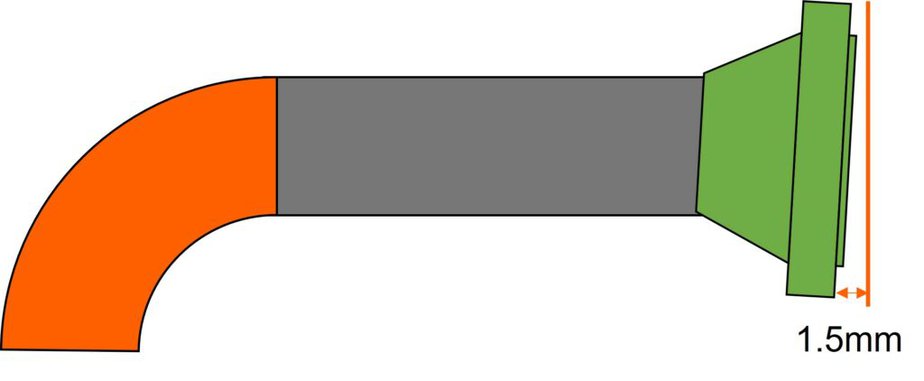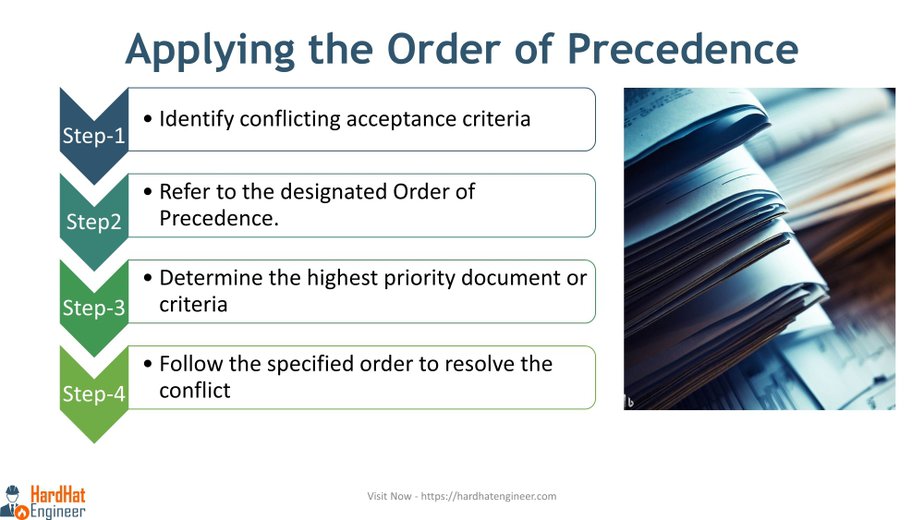When there are conflicting acceptance criteria and you are in dispute with the other party, how to resolve this kind of dispute?
In this blog post, you will learn about the Order of Precedence in Technical Documents of Construction Contracts and how it can be used to resolve disputes arising from conflicting acceptance criteria. Additionally, we will explore the importance of the Order of Precedence in commercial contracts.
Table of Contents
Importance of Order of Precedence
The Order of Precedence is a legal way to resolve ambiguity in commercial contracts. It is a critical clause in any kind of commercial agreement, including technical documents. By establishing a hierarchy of criteria or requirements, the Order of Precedence helps manage conflicts, ensure smooth contract administration, and foster better relationships between contracting parties.
Resolving Conflicting Acceptance Criteria
Let’s say you are doing dimension checking of this pipe spool. During the inspection, you found that the straightness of the flange face is not acceptable. It is tilted more than required.
But, at the same time, the Contractor is showing you the other document, and as per that, it is acceptable. How will you decide in this situation?
See the image for more clarification. Acceptable limits mentioned in Documents A and B are shown, and the actual reading.

Document A, which is Project Specification, has a one millimeter acceptance limit. However, as per Document B, which is Piping Standards, the acceptance limit is 1.5 millimeters.
| Document A Project Specification | Document B Piping Standard |
| 1 mm | 1.5 mm |
| Actual – 1.5 mm | |
| This is just an example not Real Criteria | |
Here comes the order of the preceding in the picture. It is a legal way to resolve the ambiguity in commercial contracts.
The Order of Precedence List
In the event of ambiguity or conflict among the documents within the contract, the order of precedence will follow in descending order.
Here is the sample list. What does it mean? The first document in the order has the highest precedence and the precedence gets reduced when you move lower in the list.
You have to follow the order of the document to identify the acceptance criteria.
- Signed Contract
- Statutory Requirements
- Scope of Work
- Project Specification – Document – A in our case.
- Project Procedures
- Design Code and Standard – Document – B in our case.
So, in this example, the design code and standard have the lowest precedence, and the signed contract has the highest precedence.
In our example, Document – A (Project Specification) is above Document – B (Design Code and Standard) in the list, which means the requirements mentioned in Document – A shall follow.
This is how conflicts are resolved when there are different acceptance criteria for the same things.
So, when faced with conflicting acceptance criteria, simply refer to the Order of Precedence to figure out which set of criteria has higher precedence and you should be followed that. It’s like having a compass that guides you toward clarity and consistency in decision-making.
How to Use the Order of Precedence?: A Four-Step Process

Step 1: Identify conflicting acceptance criteria.
Recognize that there are conflicting criteria or requirements from different sources or documents. This could include contractual agreements, technical specifications, industry standards, or any other relevant sources that govern the inspection process.
Step 2: Refer to the designated Order of Precedence.
Consult the applicable technical documents or contracts that establish the Order of Precedence. These documents should outline the specific hierarchy or ranking of criteria or requirements to be followed in case of conflicts.
Step 3: Determine the highest priority document or criteria.
Review the Order of Precedence and identify the highest-ranking document or criteria. This will be the reference point for resolving the conflict and making a decision.
Step 4: Follow the specified order to resolve the conflict.
Evaluate the conflicting acceptance criteria based on the established Order of Precedence. Compare the criteria or requirements in question and determine which takes precedence according to the designated hierarchy.
Importance of Order of Precedence in Commercial Contracts
Not only in Technical Documents but it is a critical clause in any kind of commercial contract.
Because it helps manage and resolve conflicts that may arise due to ambiguity in the construction contracts.

It provides structure, clarity, risk management, efficient operation, and control over the requirements. It also plays a vital role in resolving conflicts, ensuring smooth contract administration, and fostering better relationships between contracting parties where there are conflicting or inconsistent terms in a contract.
Conclusion
In conclusion, the Order of Precedence is a crucial aspect of technical documents and commercial contracts. It serves as a compass, guiding stakeholders toward clarity and consistency in decision-making. By understanding and correctly applying the Order of Precedence, you can effectively resolve disputes and ensure smooth contract execution.

